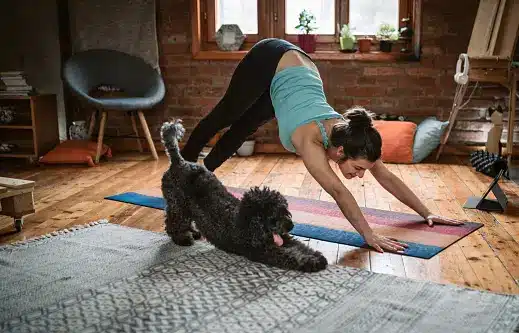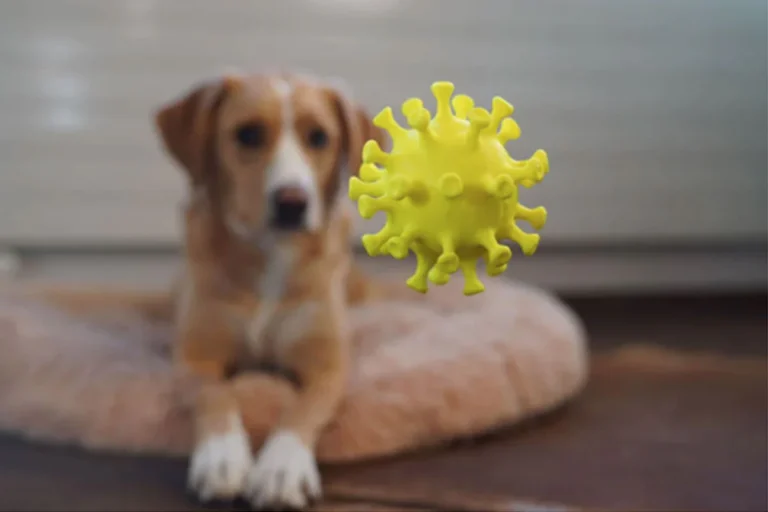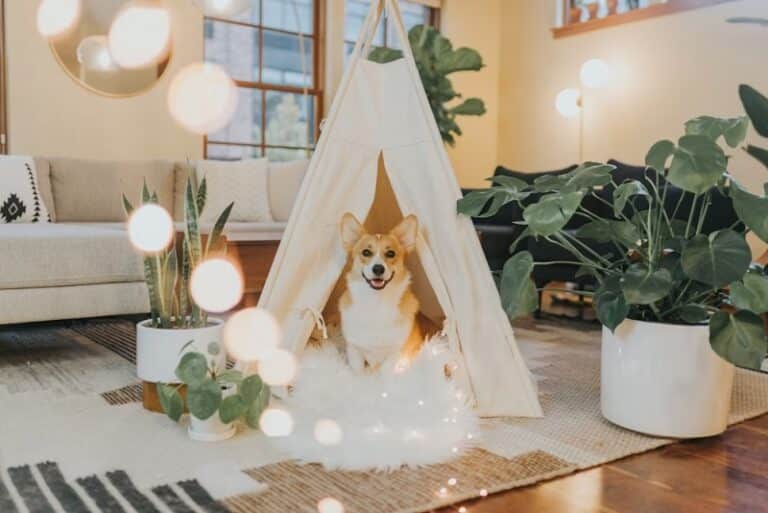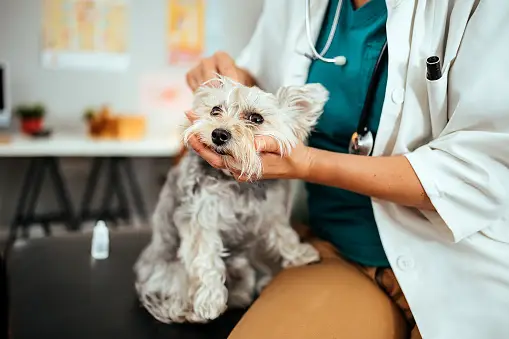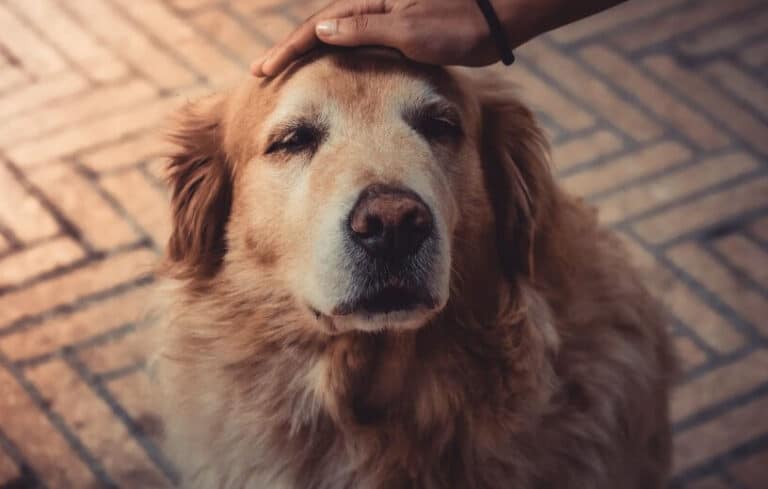Dog-Friendly Yoga
Dog-Friendly Yoga, also known as Doga, is a unique practice that combines traditional yoga poses with the presence of dogs. It is a fun and interactive way for dog owners to bond with their furry companions while reaping the benefits of yoga. In Dog-Friendly Yoga classes, dogs are encouraged to participate, either by joining their owners in certain poses or by receiving gentle massages and stretches from their owners. This practice not only enhances the human-dog connection but also provides a holistic approach to physical and mental well-being for both humans and dogs.
Benefits of Dog-Friendly Yoga
- Strengthening the Bond: Dog-Friendly Yoga creates a special opportunity for dog owners to deepen their bond with their four-legged friends. Through shared experiences and physical touch, the practice fosters trust, communication, and a sense of unity between the human and canine participants.
- Stress Reduction: Engaging in yoga with your dog can help reduce stress levels for both you and your furry companion. The calming nature of yoga combined with the soothing presence of your dog can promote relaxation and a sense of peace, helping to alleviate anxiety and tension.
- Physical Fitness: Dog-Friendly Yoga is an excellent way to incorporate exercise into your routine while spending quality time with your pet. The practice involves various yoga poses that improve flexibility, balance, and strength for both humans and dogs. It also promotes joint mobility and overall fitness, contributing to a healthier lifestyle for both you and your canine companion.
- Mental Stimulation: Dogs thrive on mental stimulation, and Dog-Friendly Yoga provides just that. The incorporation of new poses and activities challenges your dog’s mind, keeping them engaged and mentally sharp. It can also help redirect their energy and prevent destructive behaviors by providing a positive outlet for their energy and curiosity.
How to Prepare for Dog-Friendly Yoga
Before embarking on your Dog-Friendly Yoga journey, it’s essential to take a few preparatory steps to ensure a safe and enjoyable experience for both you and your dog:
- Consult with Your Vet: Prior to starting any new physical activity, consult with your veterinarian to ensure your dog is in good health and physically capable of participating in yoga. Certain breeds or medical conditions may require modifications or limitations to avoid any potential harm.
- Find a Qualified Instructor: Look for a certified yoga instructor who specializes in Dog-Friendly Yoga. They will have the expertise to guide you and your dog through the practice safely and effectively. Additionally, an experienced instructor can provide modifications based on your dog’s size, age, and physical abilities.
- Create a Calm Environment: Find a quiet and comfortable space in your home or outdoors where you and your dog can practice yoga without distractions. Remove any potential hazards or objects that could cause injury to either of you.
- Gather the Necessary Equipment: Have a yoga mat for yourself and a comfortable mat or blanket for your dog. Ensure that your dog has access to fresh water and any necessary toys or treats to keep them engaged and motivated during the session.
Choosing the Right Yoga Poses for Dogs
When selecting yoga poses for your dog, it’s essential to consider their size, age, and physical abilities. Here are a few dog-friendly yoga poses to get you started:
- Downward-Facing Dog: This pose is excellent for stretching your dog’s back and legs while also providing a gentle shoulder stretch. It helps to release tension and promote relaxation.
- Puppy Pose: Similar to Child’s Pose in traditional yoga, the Puppy Pose is a gentle stretch for your dog’s spine and shoulders. It promotes flexibility and can be particularly calming for dogs.
- Upward-Facing Dog: This pose opens up the chest and stretches the front of your dog’s body. It helps improve posture and increases mobility in the spine and shoulders.
Remember to always approach each pose gradually and pay attention to your dog’s comfort level. It’s important to never force your dog into a pose and to respect their limits. By choosing the right yoga poses for your dog, you can ensure a safe and enjoyable experience that strengthens the bond between you and your furry friend.
Getting Started with Dog-Friendly Yoga
Creating a Calm Environment
Before beginning your dog-friendly yoga practice, it’s important to create a calm and peaceful environment for both you and your furry friend. Find a quiet space in your home where you can practice without any distractions. Dim the lights, play some soothing music, and remove any objects that may get in the way. Creating a serene atmosphere will help to relax both you and your dog, making the yoga session more enjoyable.
Introducing Your Dog to Yoga
Introducing your dog to yoga should be done gradually and with patience. Start by allowing your dog to explore the yoga mat and get familiar with the surface. Encourage them to sniff and investigate the mat, making it a positive and exciting experience. Once your dog feels comfortable on the mat, begin incorporating simple stretches and movements. Use treats and verbal praise to reward your dog for their participation and progress. Remember to keep the sessions short and fun, gradually increasing the duration as your dog becomes more accustomed to yoga.
Basic Yoga Poses to Start With
When starting dog-friendly yoga, it’s important to begin with basic poses that are gentle and easy for both you and your dog. Here are a few poses to get you started:
- Downward-Facing Dog: This pose is perfect for stretching the spine and hamstrings. Start in a tabletop position and slowly lift your hips towards the ceiling, forming an inverted V-shape. Encourage your dog to follow suit by placing treats or toys in front of them.
- Seated Twist: Sit on the mat with your legs extended in front of you. Cross one leg over the other, placing the foot flat on the ground. Twist towards the crossed leg, placing your opposite elbow on the outside of the knee. Gently guide your dog into a seated position next to you, rewarding them for staying calm and engaged.
- Child’s Pose: Kneel on the mat with your knees slightly wider than hip-width apart. Lower your torso down towards the mat, resting your forehead on the ground. Stretch your arms forward and relax. This pose is great for relieving stress and calming both you and your dog.
Remember to take it slow and listen to your dog’s cues. If they seem uncomfortable or anxious, take a break and try again later. With time and practice, you and your dog will strengthen your bond through the practice of dog-friendly yoga.
Advanced Dog-Friendly Yoga Poses
Challenging Poses for Advanced Practitioners
For those who have mastered the basics of dog-friendly yoga and are looking to take their practice to the next level, there are several challenging poses that can help enhance the bond between you and your furry friend. These advanced poses require strength, flexibility, and a deep connection with your dog. Here are a few poses to try:
- Downward Dog with a Twist: Start in a traditional downward dog pose, with your dog sitting between your hands. As you exhale, twist your torso to the right while extending your left arm towards the sky. This pose not only stretches your hamstrings and shoulders but also engages your core muscles. It promotes balance and encourages your dog to follow your movements.
- Warrior III with Assistance: Begin in a standing position and extend your right leg straight back while keeping your torso parallel to the ground. As you balance on your left leg, allow your dog to rest their front paws on your extended leg. This pose helps strengthen your legs, core, and improves focus and concentration. It requires coordination between you and your dog, deepening your connection.
- Wheel Pose with Dog Assist: Lie on your back with your knees bent and feet flat on the ground. Place your hands beside your ears, fingers pointing towards your shoulders. Slowly lift your hips and chest off the ground, coming into a bridge pose. Allow your dog to stand on your chest or back, providing a gentle weight that deepens the stretch. This pose opens the chest, stretches the spine, and strengthens the arms and legs. It also promotes trust and bonding between you and your dog.
Modifications for Dogs with Limitations
Just like humans, dogs may have certain limitations or physical conditions that require modifications to their yoga practice. It’s important to consider your dog’s comfort and safety when attempting advanced poses. Here are a few modifications to accommodate dogs with limitations:
- Supported Downward Dog: If your dog has limited mobility or joint issues, you can support them in a downward dog pose by using a bolster or a folded blanket under their front paws. This modification reduces the strain on their joints while still allowing them to stretch their spine and shoulders.
- Assisted Warrior III: For dogs with balance issues or weaker hind limbs, you can use a harness or a towel under their belly to provide support during a warrior III pose. This modification helps them maintain stability and engage their core muscles without putting excessive pressure on their legs.
- Gentle Backbend: Dogs with back problems or arthritis may find it challenging to arch their spine in a wheel pose. Instead, you can gently massage their back or perform a supported backbend using a bolster or a rolled-up towel. This modification promotes spinal flexibility and relaxation without straining their sensitive areas.
Partner Poses for Enhanced Bonding
Practicing partner poses with your dog can be a fun and rewarding way to deepen your bond and strengthen the human-dog connection. These poses require trust, communication, and coordination between you and your furry companion. Here are a few partner poses to try:
- Double Boat Pose: Sit facing your dog, with your knees bent and feet flat on the ground. Hold your dog’s front paws while they lift their hind legs off the ground, mimicking your boat pose. This pose strengthens the core muscles for both you and your dog, while also promoting balance and stability.
- Puppy Plank: Begin in a plank position, with your dog sitting on your lower back. Hold the plank while your dog enjoys the ride and the sensation of being at the center of your practice. This pose engages your core, arms, and shoulders, while your dog experiences the benefits of a gentle massage and the feeling of security.
- Back-to-Back Seated Twist: Sit back-to-back with your dog, with your legs crossed. As you twist your torso to one side, gently guide your dog in the opposite direction. This pose provides a gentle spinal twist for both you and your dog, stimulating digestion and promoting spinal mobility. It also represents a beautiful metaphor for the interconnectedness of your yoga practice.
Remember to always listen to your dog’s cues and respect their boundaries during your yoga sessions. Enjoy the journey of exploring these advanced poses together, and let the practice strengthen the bond between you and your furry companion.
Tips for a Successful Dog-Friendly Yoga Session
Maintaining Safety during Yoga
When practicing dog-friendly yoga, it’s important to prioritize safety for both you and your furry friend. Here are some tips to ensure a safe yoga session:
- Choose a suitable location: Find a spacious area in your home or a quiet corner in your backyard where you can practice without any hazards or distractions.
- Use a yoga mat or non-slip surface: Place a yoga mat or a non-slip surface to provide stability for both you and your dog during poses. This will prevent any accidental slips or falls.
- Warm up your dog: Before starting any yoga poses, engage your dog in a short warm-up session. Take them for a short walk or play a game of fetch to get their muscles warmed up and ready for the session.
- Be aware of your dog’s limitations: Dogs have different physical abilities just like humans. Take into consideration your dog’s age, size, and any existing health conditions when choosing poses. Avoid any stretches or poses that may strain or harm your dog.
Keeping Your Dog Engaged
To make your dog-friendly yoga session enjoyable and engaging for your furry companion, try the following tips:
- Use treats and positive reinforcement: Reward your dog with small treats or verbal praise whenever they follow your instructions or stay engaged during the session. This will motivate them to continue participating and make the experience more enjoyable for them.
- Incorporate your dog into poses: Integrate your dog into yoga poses by gently placing them near or on your body. For example, you can have them lie beside you during a reclined twist or place them on your back during a bridge pose. This physical contact will help strengthen the bond between you and your dog.
- Use toys or interactive objects: Bring along your dog’s favorite toys or interactive objects to keep them entertained during the session. You can incorporate these toys into poses or use them as a distraction when they become restless or bored.
Building Trust and Connection
Dog-friendly yoga not only strengthens the physical bond between you and your dog but also helps build trust and connection. Here’s how you can enhance the bond during your yoga sessions:
- Practice gentle touch and massage: Incorporate gentle touch and massage techniques during your yoga session. This will promote relaxation and trust between you and your dog. Focus on areas like their shoulders, back, and neck, using slow and soothing strokes.
- Maintain eye contact and communication: Throughout the session, maintain eye contact with your dog and communicate with them through gentle words or soft commands. This will help establish a deeper connection and understanding between you and your furry friend.
- Allow for breaks and playtime: Remember that dogs have shorter attention spans compared to humans. Take regular breaks during your yoga session to engage in playtime with your dog. This will provide mental and physical stimulation, ensuring they remain focused and connected throughout the session.
By following these tips for a successful dog-friendly yoga session, you can strengthen the human-dog connection, promote a sense of relaxation, and have a joyful bonding experience with your beloved pet.
Final thoughts
Dog-friendly yoga is a wonderful way to strengthen the bond between humans and their furry companions. By incorporating our dogs into our yoga practice, we not only enhance our physical and mental well-being but also deepen our connection with our pets.
Through the practice of dog-friendly yoga, we engage in shared activities that promote trust, communication, and mutual understanding. The combined benefits of yoga and spending quality time with our dogs can result in improved health and happiness for both parties involved.
The practice of dog-friendly yoga allows us to create a harmonious environment where we can relax, unwind, and bond with our pets. It provides an opportunity to explore new movements and stretches while enjoying the company of our furry friends. The presence of dogs during yoga sessions also brings an element of joy and playfulness, making the practice more enjoyable and lighthearted.
Moreover, dog-friendly yoga can help address behavioral issues in dogs, such as anxiety or hyperactivity. By engaging them in physical activities and providing mental stimulation, we can help channel their energy in a positive way. This can lead to a calmer and more balanced behavior in our dogs, further strengthening the human-dog connection.

